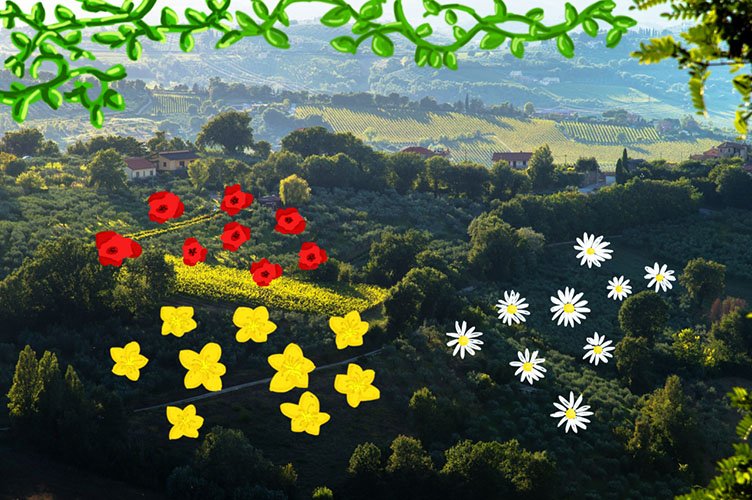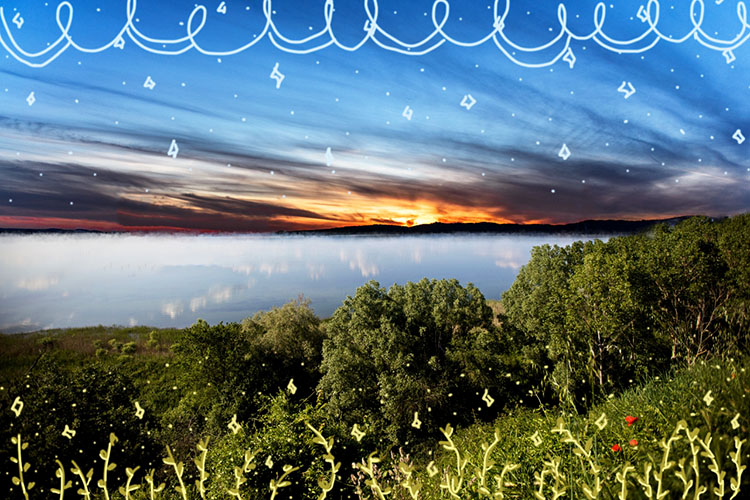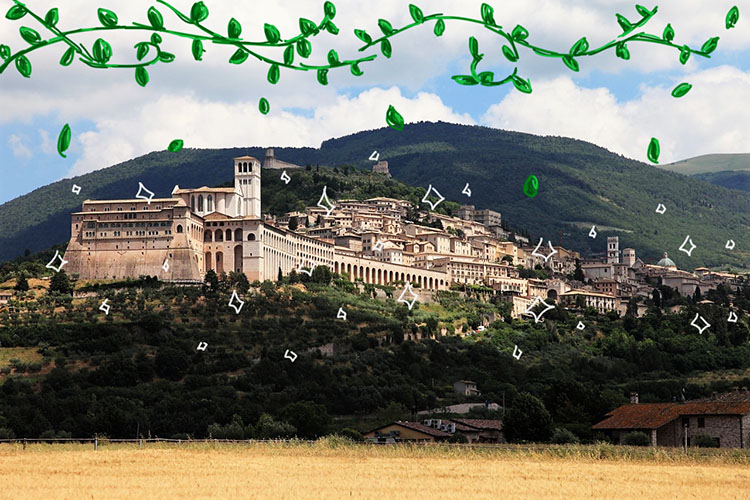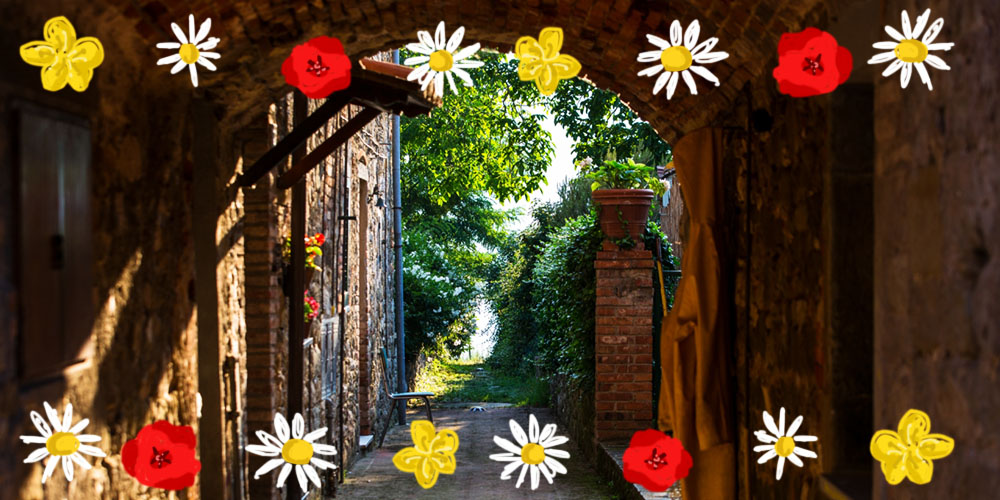Yes, it’s true that of Italy’s 20 regions some are lusher or have taller mountains and some have more fertile valleys or a more temperate climate. But in Tuscany and Umbria, the serenity and joy of their rolling landscapes, their winding lanes, and cypresses pointing in silhouette to the heavens are harder to challenge.
I took myself off to Chiantishire (so-called after the flurry of British tourists who take delight in the Tuscan countryside) with its light green vineyards, sunburnt wheat fields and long rows of trees comprising of upright cypresses, tall poplars, and parasol pines.
The landscapes have agricultural precision and elegance. It is all so engaging and life-enhancing as my senses were enlivened by the many stimuli of their smells, sights, and sounds. Fields of poppies, marguerite (daisies) and the tiny ranuncolo (buttercups) all danced in their stunning meadows. Butterflies flitted while bees buzzed along mazy, dappled lanes.
It was very late at night by the time I reached my hotel Castello di Spaltenna. But the next morning compensated by heralding the utter joy of opening the shutters of my room, like a gift, to reveal the sunshine streaming in beneath the countryside in her full glory. The hotel is cocooned amongst the ever-present vineyards, cypresses, and abete (fir trees) with curves of every shade of green that nature produces. The swallows swooped and swerved amongst the terraced flowerbeds; all very stimulating as I immersed in its utter stillness.

I took myself off to Siena to visit the cathedral. Her striking black and white striped columns reflect the balzana, the symbolic shield of the city, from the contrasting colors of the horses ridden by the two sons of Remus, brother of Romulus. I recommend visiting it late in the day when they stay open for 20 minutes after the last entry; for only then can you have it to yourself and own the experience with its full dramatic hollow silence. Back outside and the black and white façade is beautifully offset by hues of pink as the cloudless blue sky completes the aesthetic picture.
I walked back up from the dipping campo, the famous piazza where the two annual palio are staged, surrounded by dramatic steep cobbled streets and harmonious Siena brown buildings. And nice and close by was my car as, for another tip, it’s best to park right by the San Domenico football stadium.
Crossing into Umbria, the motorway hugged Lake Trasimene and the fresh air and teal-colored water drew me off route like a magnet to stumble upon a local restaurant before boarding a ferry at Passignano. As a breeze blew from prow to stern, the sea remained totally calm. There was an unruffled glinting mirror of sunlight as the boat moved all on her own along the waters creating in me a profound feeling of satisfaction where simply to exist was enough. I took a return journey to Tuoro, the scene of Hannibal’s famous victory over the Romans and then onto Isola Maggiore, where St. Francis came to meditate in 1211.

It was quite an adventure to get to my next location: Tenuta di Murlo a castellated estate presiding over the villa San Savino where I was next to stay. When I drove up a long winding road, I was greeted by the ultimate secluded spot, a hideaway with a mesmeric and enchanting view out over mountain peaks and forests, fields and the occasional farmhouse. But its crowning glory was in the absence of cars within earshot or sight across a deep valley stretching many miles. Outside the three cherry trees were bearing their full produce allowing me to imagine myself writing a novel in their shade, so stimulated, enlivened and enriched were my creative juices even before nightfall and the arrival of the stars with their full intensity.
Onto Assisi with her clean, harmonious and monochrome stone. I had come to see the lovely Basilica, perched on her own hillside, with her crypt possessing St. Francis’s tomb. It all felt so wholesome since he was an inspirational figure touching so many lives. On the upper two levels are frescoes including those by Giotto, some of which are stunning in their vivid blue. Assisi is a refreshingly spacious town with not too many selfie sticks for June, and luckily some of the more overt touristic traits were tamed by requests for silence and the banning of photos, allowing the nuns on pilgrimage to immerse themselves fully in their thought and their prayers.
Back across to Tuscany to stay at Castel Monastero Resort and Spa. It’s a small 11th-century former convent for cloistered nuns (the Pope being the only permitted outsider). By the 1400s it belonged to the Chigi Saracini family, renowned for having two Popes, one of whom, Alexandro VII, booted the Mother Superior out of the nunnery causing her such disappointment that she died at his feet. But her spirit remains in the room nearest the church and is still keenly felt by guests today.

My room looked straight out at and down a path of infinite possibilities with a house at the end that seemed to open one more shutter each day like an advent calendar. With my hotel having a break on Sunday evening I came across the nearby restaurant Podere Lecci e Brocchi, a family concern offering wonderful and honest local fare. They make their own olive oil and Chianti Classico wine, but its overriding appeal for me were the patchwork of fields opposite, in clear yellow, brown and green, like an Ivon Hitchens oil painting and almost a Howard Hodgkin.
Next, I popped in on San Gimignano, with the 13 medieval towers (out of the original 76) in full prominence justifying its sobriquet of “Medieval Manhattan” and where the tower once meant power amongst the rival households vying for status. It’s is an unspoiled, well-preserved town with a lovely approach through cypresses, silvery-green olive trees, and vineyards. With more open spaces than most Tuscan hilltop towns, it doesn’t feel unduly touristic in June. The interior of the collegiata (the cathedral’s true status) echoes Siena’s pillars and Assisi’s frescoes on the sidewalls and, like Assisi, it looks straight out into the countryside, unmarred by suburbs or modern architecture.
Later, I was led by my satnav along some lovely back roads virtually the whole way back to Pisa airport. And, as a British tourist, I was transported in every sense and by every sense! •




